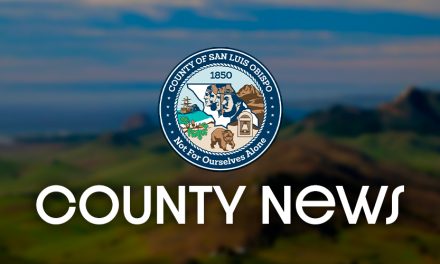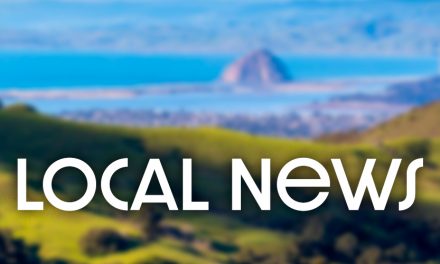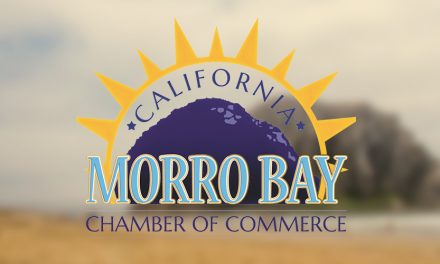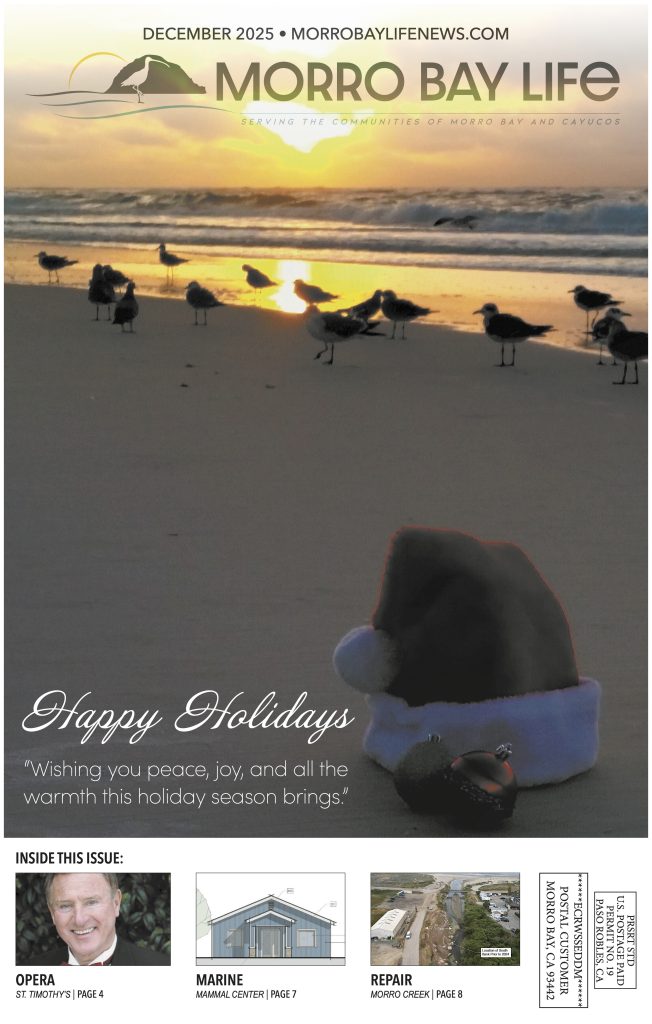National Offshore-wind Opposition Alliance starting a movement to fight offshore wind energy projects
An activist organization that sprang up organically in Morro Bay is being joined by similar groups in other states, gelling into a nationwide movement to fight offshore wind energy projects.
The “National Offshore-wind Opposition Alliance,” or NOOA, just recently chose a nine-member board of directors and is setting up as a nonprofit public benefit corporation (a 501[c]3), according to Mandy Davis, an environmental activist who, along with three others, started The REACT Alliance to fight offshore floating wind projects being pursued now for a nearly 400-square mile patch of ocean, 20-30 miles off the coast of San Simeon.
Davis laughs and readily admits the NOOA name is a play on the acronym of the National Oceanic and Atmospheric Administration or NOAA, the federal agency that is supposed to protect the ocean environment.
“It is a bit of a dig,” she said. “But it also has a functional aspect.” She explained that with the name NOOA, when someone searches online for “offshore wind,” the NOOA link will appear right below the NOAA link.
It’s a marketing tool that the marketing-savvy Davis is familiar with. The movement, she said, started years ago on the East Coast, when offshore wind projects were first proposed, and have now advanced to the point where they are installing them, in some cases with disastrous results.
Davis points out that right now, off Nantucket, Massachusetts, a Vineyard Wind turbine’s 250-foot long fan blade broke apart on July 13, washing thousands of pieces of square-foot flotsam and closing public beaches. Large sections of the blade have been recovered by the Coast Guard floating offshore from Martha’s Vineyard.
Opposition groups, including commercial fishing interests, have been working from the start to stop this industrialization of the oceans, including the accumulation of manmade noise, which is something Davis said she has been focused on for years.
She notes that BOEM (the Bureau of Ocean Energy Management, which is under NOAA’s umbrella), has put out maps showing the locations of potential offshore wind energy sites and when they started REACT, there were a scattering of red locator dots.
“The map now looks like a cancer growing,” Davis sadi. “The red dots are everywhere; like it’s metastasizing.”
She added that with every dot, “there are several organizations, foundations, and research organizations [fighting the projects]. So it made total sense to form a national alliance.”
Davis said she and a handful of others started REACT Alliance, “with the intentions of taking it national.”
She likens the fight to a David-and-Goliath struggle. “But this is a much bigger David, so we need a helluva lot bigger slingshot,” she said.
Davis notes how the wind companies have engaged and even paid some large environmental groups, and are getting their blind support.
“Saro [Rizzo, an attorney and REACT Alliance board member], and I talked about it,” Davis said. So she started contacting other groups and interested people, like scientists, to move forward with it.
They recently had their first big media exposure, an article in Reuters. “After the Reuters article came out,” Davis said of the response, “it’s proof positive this is going to make a difference.”
She stressed that NOOA is a “single-issue alliance,” which is spelled out in their Mission Statement and bylaws. The new group is non-political, non-religious, and will not allow fossil fuel companies, or their proponents, to become members.
Its motto is “No projects,” Davis explained. “No mitigation period.”
With a national alliance, which Davis said already has four opposition groups signed on, “is a much bigger story, a bigger group. We’ll have more clout.”
As a single-issue alliance, Davis said they can maintain focus and clarity, as well as their credibility.
She said these offshore wind companies are being deceptive. The OSW companies claim opponents “are funded by fossil fuels,” Davis said. “It’s the offshore wind companies that are funded by fossil fuels; the irony in that is extreme.”
Like REACT Alliance, NOOA is working on a shoestring budget, and blessed with many talented people volunteering their time.
“Everything is being done pro bono,” Davis said. “We’re doing it for free.” The alliance has people adept at legal issues, marketing, and website design, who are all contributing. They will do that with the national alliance, too.
NOOA had its first meeting online via Zoom, where the group members nailed down a name, a logo, a charter andmission statement. The next meeting, she said, would be in early September, when she said they will discuss strategies, direction, and funding, which will be a big hurdle.
“I’m excited about it,” Davis said. “I’m excited because everyone else is excited about it. [But] It has been on the overwhelming side.”
As a veteran environmental activist for the oceans, Davis is shocked by what she’s seen happening with offshore wind, namely the government’s complete acquiescence to industry.
“Never in my life have I seen such industry and government spin,” Davis said. “It’s mind-blowing.”
NOAA is not doing its job, she added, BOEM’s process is insufficient and, along with the Coastal Commission, all the agencies have “bit the dust and are not doing their jobs.”
She noted that through REACT, she or someone from that group has gone to all the Coastal Commission meetings and watched as the staff “cherry-picked the data or is ignoring it. There are so many problems.”
According to Davis, an example happened recently when a European study off England and Scotland came out on the effects of the OSW underwater sound tests and noise from the wind turbines, too, has had on marine mammals, in particular whales.
“There’s been a huge surge in cetacean [whale] mortality, but there’s been no press coverage,” Davis said. From what she’s seen of the data in that study, “The correlation is unmistakable,” between OSW and whale deaths.
She said they submitted that data to the Coastal Commission. “We put that right in front of them, then their lead biologist said ‘correlation does not necessarily mean causation,'” she said.
The Coastal Commission recently approved a Coastal Development Permit for the underwater testing in State Waters, inside three miles from shore.
The OSW companies need to map the route that transmission cables will take to bring the 3 gigawatts of power ashore to connect with the state power grid. The approval was for a three-mile wide swath to be mapped and tested using the sound equipment to identify the contours and composition of the seabed.
The idea is to locate things like reefs and rock piles, both valuable fish habitat, and avoid disturbing those areas for the trenching needed to bury the transmission cables.
With permits in hand, Atlas Wind can start that testing any time but so far has not announced a schedule, as it did for the recently completed testing and mapping the “Morro Bay Call Area” at the wind farm site.
The other two wind companies are in various stages of seeking the same permits.
Between the fast-tracking being done with permitting and quick installation of wind turbines offshore on the East Coast, having details ignored is bad form, according to Davis.
“It does not bode well,” Davis said of the agencies. “They’re ignoring their own mandate to protect the ocean environment.”
She added that there are a lot of lawsuits being filed on the East Coast “citing these violations.”
And as for the latest permits that were issued by BOEM, “We had no idea it was happening,” she said.
She noted that the East Coast’s issues apply to the left coast as well. “It’s the same issues,” she said, “with slightly different technical aspects. That’s why a national alliance is being formed.”
Davis said NOOA is working on getting a website up but until then, if readers want to know more about OSW, they can see the REACT Alliance website at reactalliance.org; go to BOEM’s official site at boem.gov; or email Davis at mandy@reactalliance.org.
Feature Image: Photos from Hywind Tampen, June 2023.







